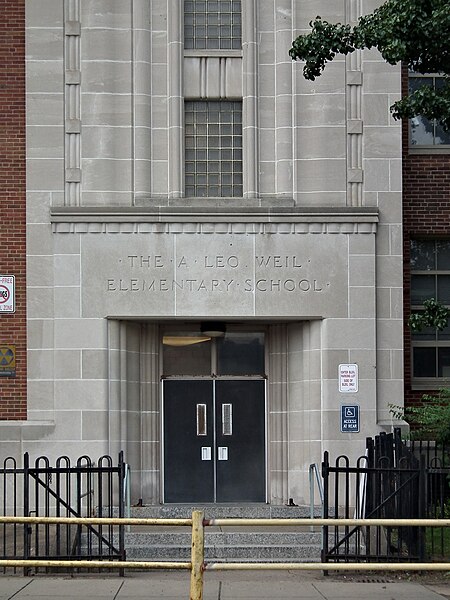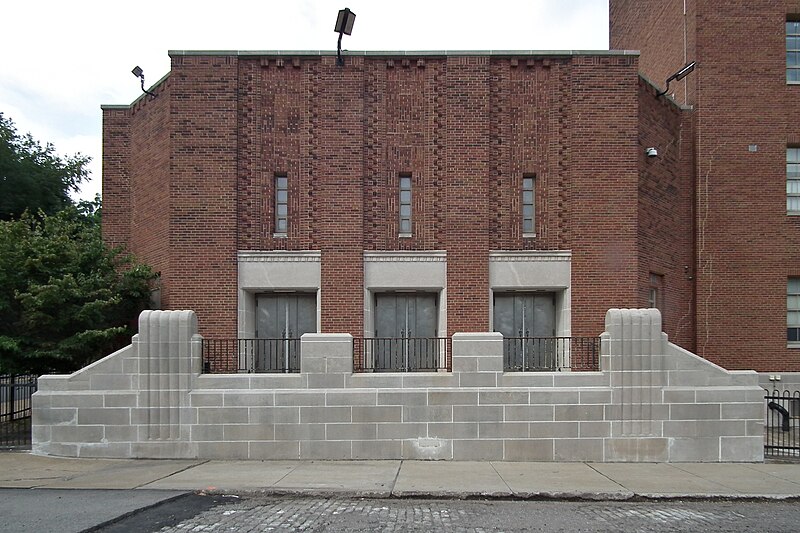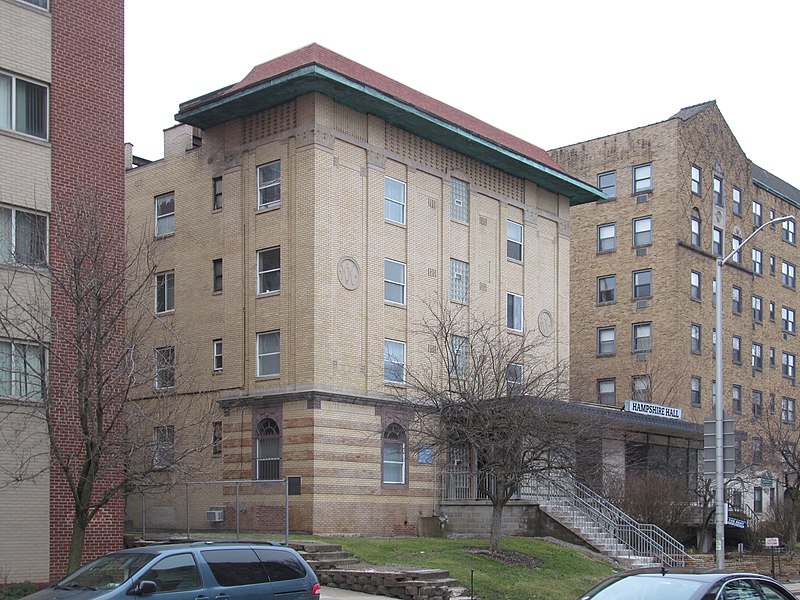
Highland Avenue crosses Centre Avenue in East Liberty at an odd angle, creating an opportunity for two typically Pittsburghish odd-shaped buildings. First, the Wallace Building, shoved into a sharp corner and coming to a point at the intersection.

Old Pa Pitt hopes his readers will forgive a slightly imperfect composite of three photographs.

On the opposite side of Centre Avenue, the Stevenson Building fills in an oblique angle. Its prominent corner entrance makes the most of its location.
There is some uncertainty about the design of this building. It is listed by the city as a building designed by William Ross Proctor and built in 1896. However, Father Pitt finds a 1927 listing in the Charette, the magazine of the Pittsburgh Architectural Club, that matches this building perfectly and assigns it to O. M. Topp: “313. Architect: O. M. Topp, Jenkins Arcade, Pittsburgh, Pa. Owner: James B. Stevenson. Title: Store and Office Building. Location: Highland and Center Avenues. Approximate size: 25×100 ft.; three stories and basement. Cubage: 100,000 cu. ft. First story: Amherst buff sandstone; second and third stories: Roman brick and terra cotta.” Nevertheless, a building of exactly these dimensions stood here long before 1927, and we have not been able to find any newspaper stories about its destruction or replacement. It is possible that Topp only supervised renovations, and the editor of the Charette misunderstood the information he was given. As of now, therefore, Father Pitt assigns the building to O. M. Topp, but with the understanding that Proctor might have been the original architect.





































